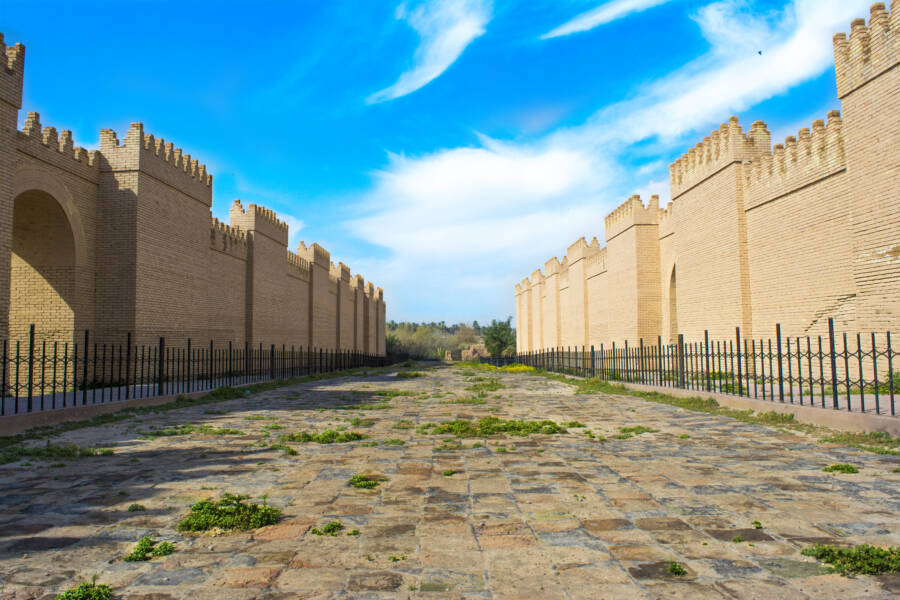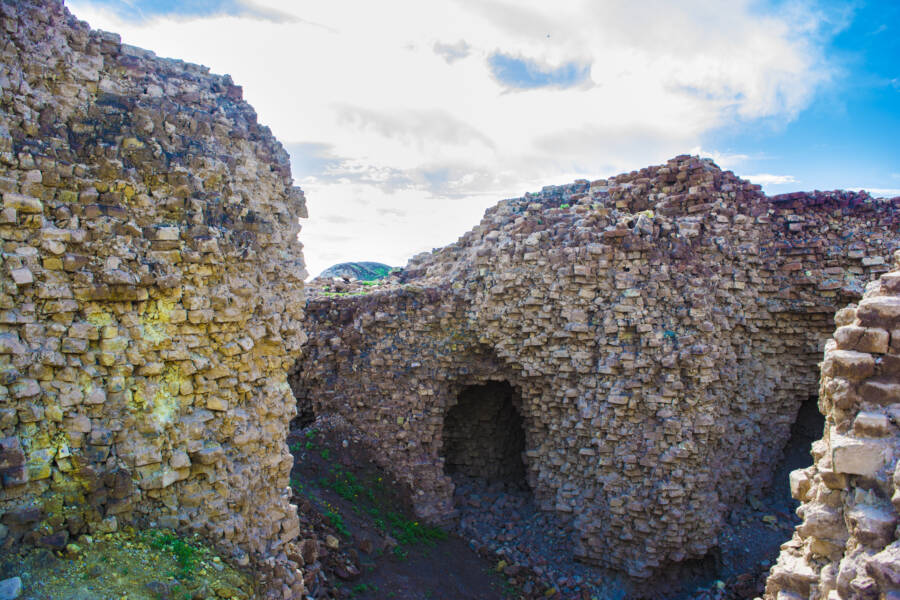Babylon: The Legendary Lost City Of Mesopotamia

Osama Sarm/Wikimedia CommonsA reconstructed section of the lost city of Babylon.
Babylon, situated along the Euphrates River approximately 50 miles south of modern Baghdad near the city of Ḥillah, is one of the most famous lost cities of antiquity — thanks in part to its fabled hanging gardens.
The city rose to prominence under the Amorite king Hammurabi, who ruled from 1792 B.C.E. to 1750 B.C.E. Hammurabi conquered surrounding city-states and established Babylon as the capital of a kingdom encompassing all of southern Mesopotamia, and it soon became synonymous with power and sophistication in the ancient world.
Babylon reached its peak during the Neo-Babylonian Empire under Nebuchadnezzar II, who took the throne in 605 B.C.E. The king undertook massive rebuilding and fortification projects.
The city became a testament to this civilization’s creativity, showcasing remarkable urbanism and monumental architecture, including palaces, temples, and the famous ziggurat that may have inspired the story of the Tower of Babel. It fell under Persian rule after its capture by Cyrus the Great in 539 B.C.E., but Babylon retained its prestige.

Osama Sarm/Wikimedia CommonsAncient ruins in Babylon.
After Alexander the Great’s conquest in 331 B.C.E., the city briefly served as his intended imperial capital before his death there in 323 B.C.E. However, Babylon’s importance diminished significantly after a new capital was built at Seleucia on the Tigris River in 305 B.C.E. The once-great metropolis gradually fell into ruin.
Archaeological excavations have revealed Babylon’s outer and inner walls, gates, palaces, and temples, though the vast majority of the lost city remains unexcavated.





